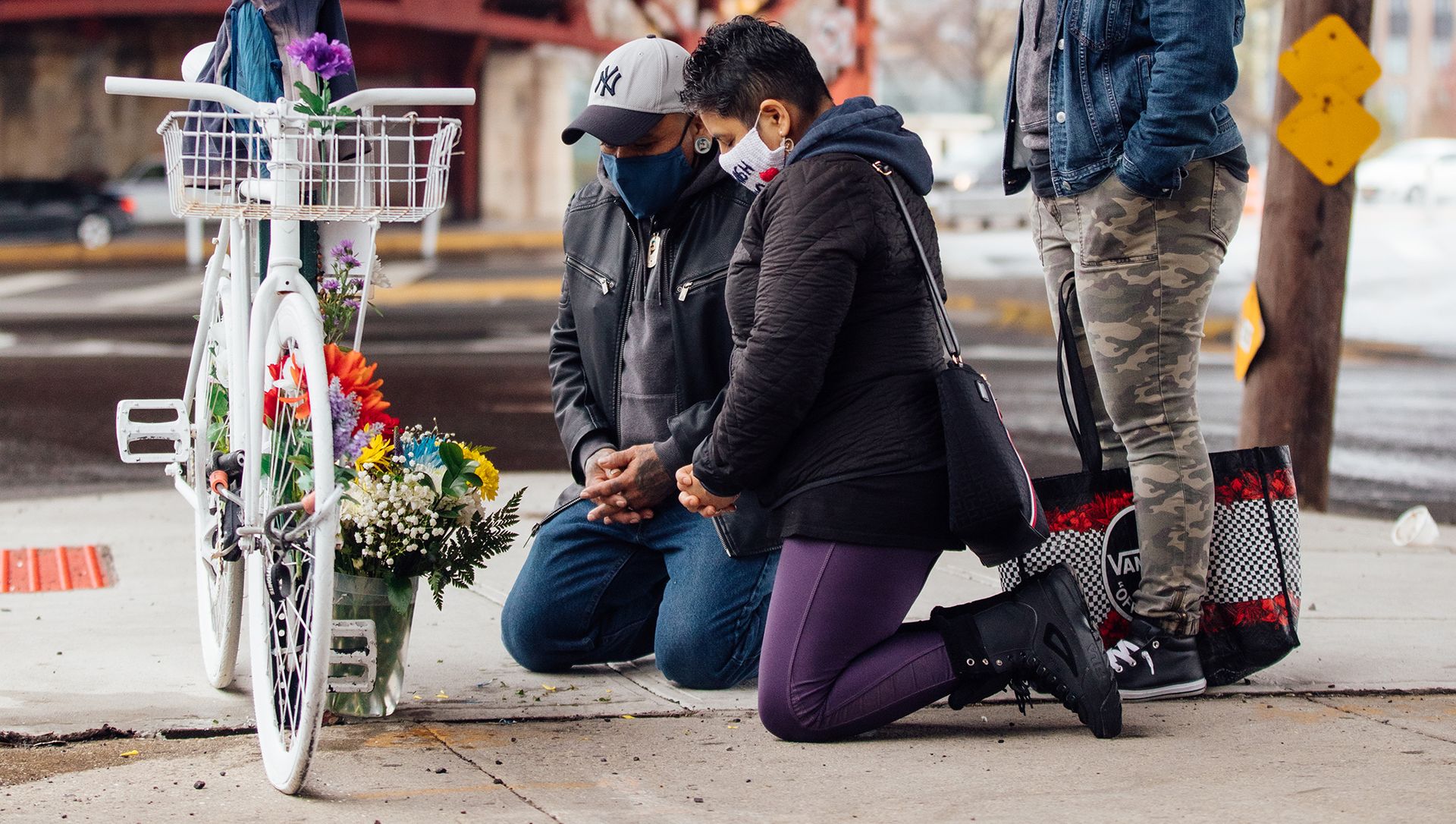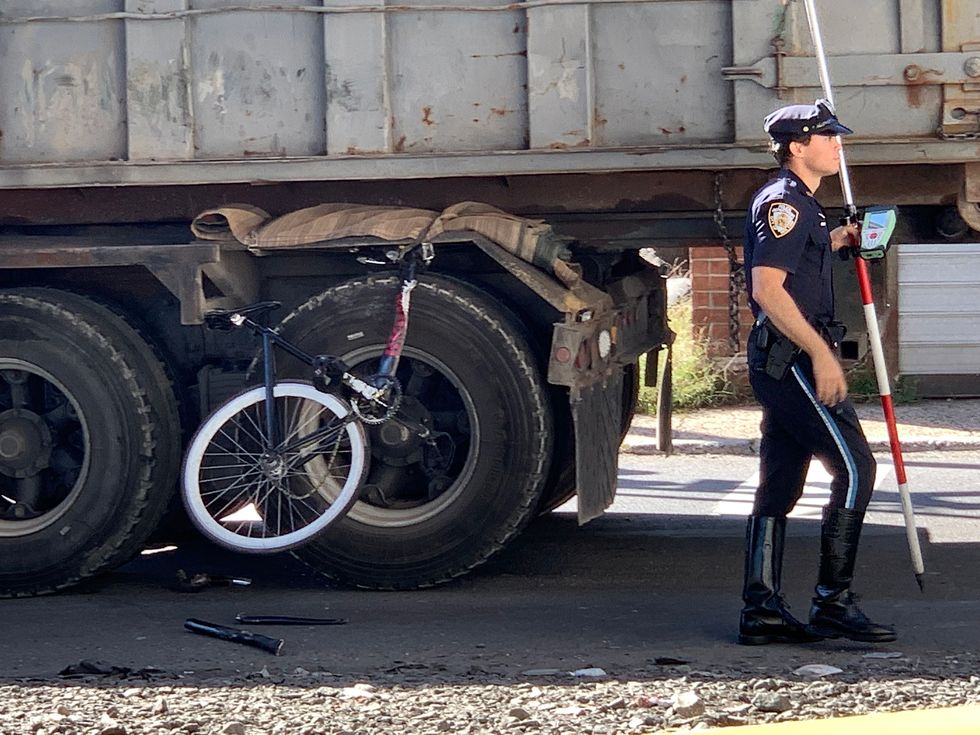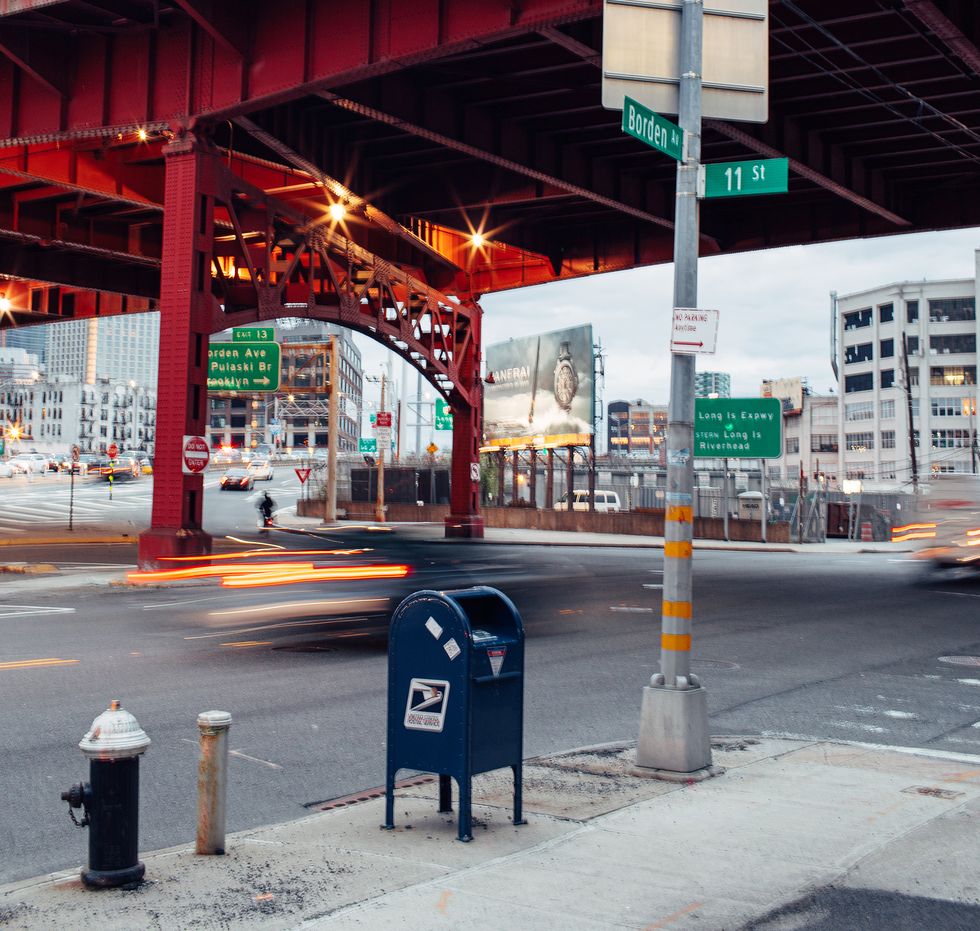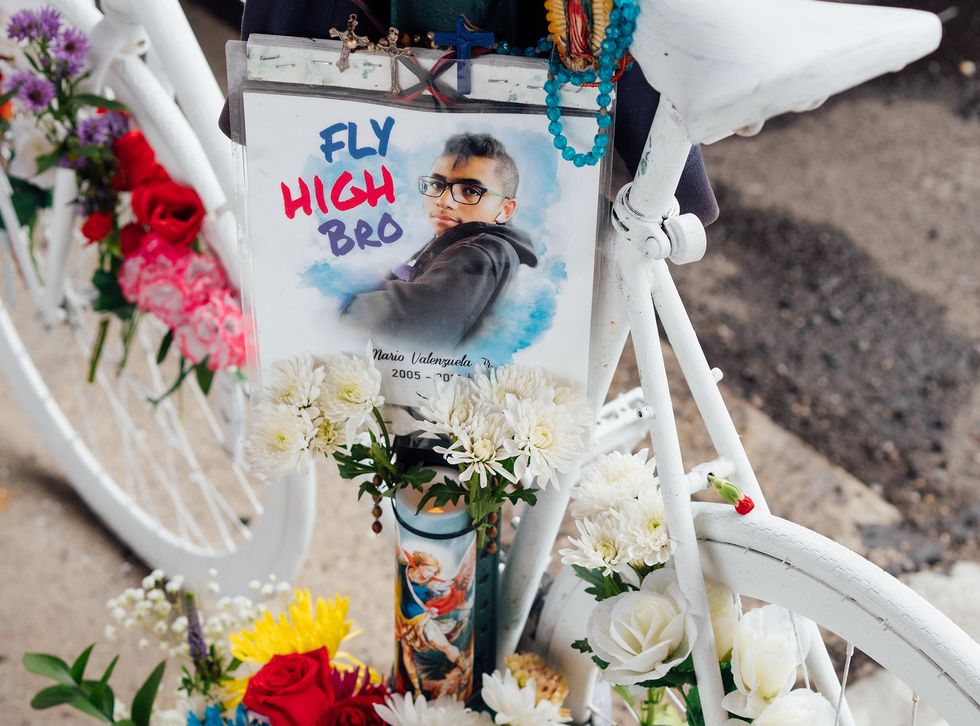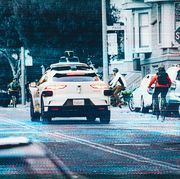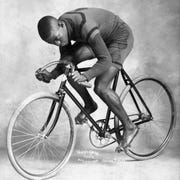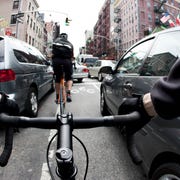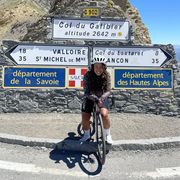This is a story about life and death. It’s a story about the beauty of bikes and familial love. It’s about a 14-year-old named Mario Valenzuela who was crushed by a Mack truck.
This is a story without a happy ending, really without any ending—a story that hangs in the balance. Because the questions it raises about whether everyone can ride in their communities without facing the terrors wrought by institutional apathy are the subject of endless, incomprehensible debate that devalues the lives of riders like Mario, and politicizes the anguish of their families.
Mario loved bikes. That is beyond debate. He spent his afternoons riding with his friends near his home in Astoria, a New York City neighborhood on the western edge of Queens. Mario went on lots of rides, but this story pivots around the one on September 21, 2019. The streets of New York bathed in the last vestiges of summer weather. Mario and a friend hooked up with two buddies over by the landmark Pepsi Cola sign in Gantry Plaza State Park, a waterfront promenade along the East River in the neighboring community of Long Island City. As they started riding east, one of them got a flat, so they detoured south to a local shop to get it patched. That’s why the four boys wound up on Borden Avenue.
Even by New York standards, the fabric of Long Island City has been transformed over the past 20 years. Though the neighborhood was a sprawling industrial district for decades, today Long Island City is dotted with gleaming residential high-rises, craft breweries, and ramen joints. But Borden Avenue—wide, straight, and the only east-west road out of that part of the neighborhood—travels the southernmost margin of Queens, which remains the province of tow yards, building-supply wholesalers, distribution centers, and a massive Long Island Rail Road train yard they sought to skirt around.
When Mario and his friends turned left at the light from Vernon Boulevard onto Borden, they were right beside and then behind the Mack truck. The 52,000-pound vehicle had a light gray cab with blue accent stripes and a large gray dumpster on the back.
Some of the facts about what happened next are known because two video cameras located on the exterior of a warehouse recorded Mario’s trip down Borden Avenue. The one pointed west captures the truck turning onto Borden, and moments later Mario enters the frame, wearing track pants and a pink T-shirt, and riding a black single-speed with drop bars, pink lettering, and deep white rims. He’s riding faster than his friends, maybe a car length behind the truck. There are no vehicles parked on Borden Avenue, and Mario rides to the right of the traffic lane. Before they both pass out of the frame, the truck has shifted left to sit halfway into the oncoming traffic lane.
The second video, looking east, is shorter and considerably more terrifying. The truck enters the frame at about the same speed but now the right front tire is touching the road’s double-yellow midline. Up ahead, Borden Avenue continues and there’s an on-ramp to the Long Island Expressway to the left. In the matter of a second or so, the truck decelerates and turns right from Borden onto 11th Street. I have watched that video more than 100 times and I cannot discern whether a turn signal or brake lights are visible. In any case, the truck decelerates far faster than Mario does. And despite an effort to slow down and turn right, Mario and the truck collide near its right front wheel and he falls to the pavement.
Then both the rider and the truck exit the frame, leaving the final second or two of Mario’s life off camera.
Like so many narratives about bike riders who are killed in a crash with a motor vehicle, the deeper you investigate Mario’s story, the more heartbreaking it becomes. But the extra layers of pain and injustice in Mario’s case are especially tragic—because he was a child, the son of Hispanic immigrants, pedaling in a city where bike riders are completely marginalized.
Martha Valenzuela, more than a year later, carries her son’s death like an open wound. “It is still very painful,” she says on a phone call this past December. “It’s a type of pain that you cannot describe.” Martha came to New York City from Mexico City about 25 years ago. For many years, she has worked in a laundromat in Astoria. Her husband, Mario Sr., works in construction. Both have labored hard for decades in their adopted hometown, concentrating their energy into building a better life for their three children born in the U.S., Mario and two older sisters, Rocio and Sara.
As an immigrant on the margins, it takes courage for Martha to speak out publicly about her son’s death. But, she says, “At this point, I’m not afraid. I’m not scared. Whatever I have to do—I will do for my son.”
The laundromat where Martha works is five or six blocks from IS 126, where Mario was a student. “He wasn’t that good at school, but he liked it,” laughs Martha. Every morning, she and Mario would go to the laundromat around 7 a.m. Some days, like on September 21, she’d feed him breakfast there. “He liked French toast and egg sandwiches and pancakes. And then after school he would come to the laundromat for a couple hours, tell me what he did that day, and then we’d go home together.”
“He was a good kid,” Martha says. “Not just because he was my son. He was kind.”
Martha works on Saturdays, and she recalls saying goodbye to her son at the laundromat on the day that he was hit. Mario and his sister Sara came over to wash their own clothes, and left before lunchtime. “I told him to be good and I touched his face,” Martha says, taking a deep breath. “That was the last time I saw him.”
A few hours later, a friend came by and told her Mario had been hit. She eventually wound up at the New York Police Department’s 108th Precinct in Long Island City. There, she was told that Mario was gone.
Martha and Mario Sr. identified their son’s body the next day at the medical examiner’s office, but getting answers took longer. Martha says that eventually a detective with the NYPD called her and told her the crash was Mario’s fault. “The detective said he was hanging from the truck and that’s why the crash happened,” she says. “I didn’t want to believe that, but we didn’t have proof on anything else.”
Weeks and then months dragged on as the family waited for more information about the crash. “That whole time, we were waiting for proof,” Martha says. “So I started thinking it was his fault.” A year would pass before the family would finally see the NYPD’s file on Mario’s death.
Three calls to 911 came almost immediately after the 1:54 p.m. crash. Within minutes, two officers with the 108th Precinct had answered the “10-53 pedestrian struck” call from dispatch and were on the scene. An ambulance arrived quickly, and an EMS technician pronounced Mario’s death at 2:02 p.m.
These and many other details are documented in a report produced by a division of the NYPD known as the Collision Investigation Squad. Bicycling has obtained a copy of the 50-page CIS file, which summarizes the investigation into Valenzuela’s death. It is an enlightening and discouraging document that raises questions about the proficiency of this agency to seek justice for anyone who rides a bike in New York City. CIS involvement was requested a minute before Mario died and an investigator, Detective James Conlon, was on the scene within 90 minutes. Before he arrived on Borden Avenue, Conlon had already conducted phone interviews with two drivers who had witnessed the incident and had called 911. Once there, Conlon interviewed the first NYPD officers on the scene, took photos and collected other evidence, canvased for additional witnesses (he found none) and video cameras, and obtained a written statement from the truck driver.
In the CIS report’s statements, both eyewitnesses, as paraphrased by detectives, indicated that they’d seen Mario holding onto the truck and let go as both turned onto Borden. They did not report seeing Mario holding onto the truck at any point along Borden. And neither could recall if the truck made a turn signal before the crash.
The truck driver told Conlon that he was not using his phone during the incident (the report does not mention whether Conlon made an effort to substantiate this). The NYPD officers examining the truck noted that the front turn signal on the passenger side was inoperable. The CIS detective observed one building near the crash site with exterior cameras and noted he’d return during normal business hours. Around 4 p.m., Conlon met with an assistant district attorney at the scene, and together they agreed that no criminal charges would be brought against the driver at that time.
Three days later, when Conlon obtained video footage from the cameras he saw at the scene, the case had already been preliminarily closed. But the CIS report does confirm that the lead investigator watched the same two video perspectives described earlier, and he offers an 81-word summary of the footage. There’s no mention of the driver’s speed or how the truck traveled across the roadway’s centerline or how Mario should have been visible in the truck’s side-view mirror for the entire stretch of Borden Avenue or how state law gives Mario the right of way to travel straight through an intersection. The brief summary does, however, state that the truck’s right-turn signal—presumably the rear—is visible.
On the day of New Year’s Eve in 2019, the CIS investigation into Mario Valenzuela’s death was formally closed with only one major contributing factor noted: “BICYCLIST ERROR.” The CIS document concludes that Mario had been improperly passing the truck and then was unable to stop in time. Detective Conlon also opined that the criminal citations against the owner of the truck, including the inoperable turn signal on the side of the truck that hit Mario, were not relevant to his investigation. After noting that he had conferred with his CIS supervisor and the Queens District Attorney office, Conlon ended his report with the following four words: “Case closed/Investigation concluded.”
After more than three months and despite video showing him riding safely and legally, the NYPD blamed Mario for his own death.
One detail that stands out from watching the videos in the CIS report is the presence of three bike riders behind Mario. In a search for witnesses, Detective Conlon interviewed two of three drivers who called 911 (he could not reach the third), took a statement from the truck driver, and canvased Borden Avenue hours after the crash. But there is no mention of an effort to contact the three bike riders (who were Mario’s friends) for statements.
I tracked one of them down in a few days. The boy’s mother let me speak with him if I did not share his name. “It really wasn’t Mario’s fault,” the boy says. “I mean we were next to the truck for a few blocks.” After the crash, he and the other two riders retreated up the block a bit and sat on a stairway to absorb what had happened, watch the activity, and make some phone calls. “The police never came to talk to us so we left,” he says.
This young man, who is 15 now, says that he met Mario in sixth grade. They had another friend in common and the three were tight. One of them had a backyard where they would shoot hoops or play soccer.
“We rode all summer,” says the boy. “Mario was really good at riding bicycles. We would go to Flushing Meadows Park for the whole day. He was the fastest of all of us. He would ride fearlessly.”
When asked to describe Mario, the boy says he was fun to be around and good at soccer. “He would always pay for people who didn’t have money when we went to eat,” he adds. “Mario cared about other people.”
With crashes like the one that killed Mario Valenzuela, police investigations and media reports typically focus on the individuals involved, in a logical quest to determine fault. But in the bigger picture, fault often lies in road design and the voices and interests that are valued by people with power.
This is certainly true on Borden Avenue. Just six months before Mario’s death, another cyclist named Richard Spencer had been struck and killed less than a half mile west of where Mario was hit. And two months before that deadly crash, the board of a nearby residential condo, the Murano, had written a letter to city officials asking for a protected bike lane on Borden Avenue. “The natural makeup of the long straight sections of road encourages reckless driving,” wrote the shareholders. Bike advocates in New York say that this corridor has been a focus of their efforts for years, with little progress. “We see that all the time, that there are streets and intersections where the city has essentially been on notice for a long time about the conditions,” says Marco Connor, Deputy Director of Transportation Alternatives, a New York nonprofit that has advocated for safer streets since 1973.
These issues are hardly unique to New York City, and often they play out in hyperlocal fashion, as projects get killed in community meetings rather than at city hall or the Department of Transportation. New York City’s five boroughs have 59 community boards that manage issues like zoning and event permitting, and under Mayor Bill de Blasio have been empowered to make decisions about local road projects.
“Very often community boards water down projects to appease local opposition,” says Connor. “And these boards are often not representative of their communities. They trend older, have a higher rate of car ownership than the community, and are whiter.” In the case of Long Island City and neighboring communities, the local board members have consistently voted or advocated against proposals to build protected bike lanes.
No doubt, the local politics and community sentiments around bike lanes are complicated. In some cases, community support for protected infrastructure in working-class neighborhoods is limited because residents see them as tools of gentrification or because they don’t solve larger issues related to policing and safety. But an oversized reason that neighborhoods like Long Island City lack safe places to ride is because the people in those communities who ride—often young, less affluent people of color—lack a voice and power. “If you look at a map of New York City and look where bike lanes are, an overwhelming majority are in white and wealthy neighborhoods,” says Connor. “The way the city has decided to invest in infrastructure shows great disparity. There’s historical inequity along the lines of race and wealth.”
The chasm between the needs of the community and the position of local political leaders was exposed at a community meeting in Queens less than three weeks after the fatal crash. The meeting was intended to discuss a proposed protected bike lane on another street in Astoria, but things got sidetracked as Mario’s death became a political football.
“We had a young man on Borden Avenue who was killed,” Cathy Nolan, a Queens Assembly member, said at the community meeting. “Borden Avenue is a street that bikes should be prohibited from… It’s a nightmare tragedy this child was killed, but honestly, it’s a very difficult place to envision someone riding a bike.”
Juan Restrepo, a community organizer in Queens for Transportation Alternatives, was at that meeting and says Nolan’s statement, which she later walked back, reflects a “bigger issue” that keeps streets like Borden Avenue unsafe. “It’s about how elected officials perceive the users of bike lanes,” he says. “And if they don’t seem like an important enough constituent, they don’t take it seriously.”
It is worth noting that the same week that Mario was killed, a $40 million public library with a spectacular teen center opened eight blocks away. And that residential developments continue to bring more families into the neighborhood. As communities change, attitudes and policies and street configurations need to change, too. Borden Avenue is more than the province of trash trucks and harried commuters; it is part of a community where people live and work and even play.
Still, a year and a half after Mario’s death, there is neither a bike lane, nor a plan to build one, on Borden Avenue.
Mario’s sister Sara didn’t want to talk to me on the phone. “I don’t think my daughter can handle Mario’s death—she was the keeper of him,” says Martha. “She used to take him to school and the park. It’s too hard for her.”
But Sara, now 22, was willing to answer my questions via email. She describes her younger brother as a “silly, funny boy who liked to play pranks,” who liked to playfully jump-scare her when she was leaving a room. She says he liked to play Fortnite and Call of Duty and listen to Lil Peep and XXXTentation and a bunch of indie hip-hop artists on SoundCloud. On the day of Mario’s last ride, Sara walked home with him from the laundromat. “We were home and I was cleaning the kitchen and he asked for permission to go hang out with his friends,” she recalls. “When he left, I told him to be careful.”
A couple hours later her phone rang. “Around 2 p.m. my mom called me crying saying that Mario got into a car accident and she told me to go to the police department,” she says. Hours of confusion followed—the station nearest their home wasn’t the right precinct. As they were trying to find the correct station, Sara and others were frantically making phone calls. “We called a lot of different hospitals asking if my brother was admitted and they all said he wasn’t there.”
Finally, when they got to the 108th Precinct, the unthinkable happened. “One of them took us outside and told us that he didn’t make it and died on the scene,” she says.
Sara soon found herself more explicitly connected to the search for justice. The findings of the CIS report meant that the truck driver would not face criminal charges. As with many cases when a cyclist is killed, the family of the victim can only seek some kind of justice in civil court. Sara, who was born in this country, ultimately had to be made the legal administrator of Mario’s estate. His own parents, who have lived and worked in New York for 25 years, lacked the legal standing to do so.
When asked how she wanted people to remember her little brother, Sara echoes comments from Mario’s friend and his mother. “I want people to remember that Mario was a good person,” says Sara. “He always helped his friends and the people he cared about.”
Sara also mentions that Mario was hoping to leverage his riding for his first real job. “He wanted to join Uber Eats or a food-delivery service when he turned 15 and use his bike to deliver,” she says, noting that he would articulate the nuances of his love of riding. “He said he liked the way the wind felt when he rode his bike. I think it made him feel free.”
This past November, the New York State Department of Motor Vehicles conducted a hearing to determine if Tyron Leon, the truck driver who hit Mario, should have his driver’s license revoked or suspended. The administrative law judge who heard the case ruled in Leon’s favor and wrote a decision that essentially echoes the findings in the CIS report. Steve Vaccaro, an attorney with the New York firm Vaccaro & White, who is representing Mario’s estate, says the judge accepted Detective Conlon’s interpretation of the video evidence without watching it himself. In the end, the DMV judge ruled that the driver was exercising due care and Mario was attempting to illegally pass the truck.
The repercussions of the CIS report—concluding that Mario died due to “Bicyclist error”—continue to distress his family, bike riders, and anyone else who has seen the video evidence. What does it matter if he held onto, and let go of, the truck well before the crash, as the detectives noted? “Perhaps police wrongly blamed Mario for this fatal crash because some witnesses thought they saw him skitching on the truck,” says Vaccaro. “But as a legal matter, if that occurred, it was so long before the actual collision as to be completely inadmissible in court and irrelevant to what caused the crash.”
More broadly, what might an alternative explanation for the crash be? Some possible answers are alleged in the civil lawsuit filed by Vaccaro last November, roughly 14 months after the teenager’s death.
In a complaint filed with the Supreme Court of the State of New York in Kings County, Tyron Leon as well as Limited Interior Group, the company that employed him and owned the truck, are named as defendants. Throughout the document, Valenzuela is referred to as the Decedent.
The complaint alleges that the driver and the truck owner should be liable for negligence and the wrongful death of Mario Valenzuela. With regards to Leon, the complaint itemizes 28 alleged “acts and omissions” that comprise the negligence that caused Mario’s death. Among that list of assertions, the complaint alleges that Leon overtook Mario “in an unreasonably unsafe manner by failing to remain at a safe distance from the Decedent before moving right.” It also alleges that Leon was operating the truck without a right turn signal, that he failed to signal his turn, failed to properly use his truck’s mirrors, failed “to keep a lookout for Decedent, a cyclist who was proceeding in the roadway in all respects lawfully,” and was operating a “mobile phone or other portable electronic device” while operating the truck. (Although Detective Conlon did not include any mention of that final point in the CIS report, Vaccaro says the CIS detective did acknowledge the possibility of device usage during the DMV hearing in December.)
Meanwhile, the complaint alleges that Limited Interior Group is negligent because it failed to conduct a daily inspection on the truck and allowed a 26-ton truck without a properly functioning turn signal to be operated on public roadways.
Among the more chilling passages in the complaint is one that notes that Valenzuela “was grievously injured in the crash, and following a period of pre-impact terror, and a further period of conscious pain and suffering, the Decedent died of injuries suffered in the crash.” (When reached to discuss the case, legal counsel for Leon and Limited Interior declined to comment.)
More than five months after that complaint was filed, hearings on the matter have not even begun, due to legal wrangling over whether the case should be heard in Brooklyn (where Leon resided when the crash occurred) or Queens (where he since moved, and where juries tend to be less sympathetic to cyclists, Vaccaro says).
The procedural delays are agonizing for Mario’s family. “It is impossible for me to have peace when the official government account of what happened is a lie,” says Martha. “We look to our government to provide justice for the people at a moment like this.”
On February 24, Martha Valenzuela and her attorney participated in a hearing conducted by the New York City Council to debate a new bill that proposed to shift crash investigation from the NYPD to the Department of Transportation. It’s easy to get sidetracked by rhetorical interpretations of defunding police, but in this case the proposal was simply exploring whether the entity charged with making safer roads in New York, with arguably more expertise on the matter, should lead investigations for crashes that cause death and serious injury. A Transportation Alternatives report issued last year reveals a troubling history of racial bias in the city’s traffic policing and notes that NYPD officers arrested only 1 percent of hit-and-run drivers in 2017.
In an emotional live video statement made to the city council, Martha testified to her pain—over both her loss and the investigatory flaws that blame her son for his own death. Wearing a white sweatshirt decorated with Mario’s photo and the words “Fly High Bro,” Martha sits in Mario’s bedroom—behind her on the wall is a crucifix, a framed photo from a soccer game, and a Union Jack flag emblazoned with the phrase “Punk’s Not Dead.” “He was out with his friends on that Saturday and he never came home,” she says, choking back tears. “I never had the chance to protect Mario from that truck driver. I never had the chance to say goodbye to Mario. For a mother, these are terrible things that make my heart ache.”
Her final thoughts in that brief testimony transcend her personal grief. “Nothing can be done to bring Mario back,” she says. “We can only continue our fight to win justice for Mario by bringing to light the truth of what happened. I cannot say why police chose to blame Mario when the video shows that it is not his fault. Part of it is that people, including the police, do not understand and respect the right of people, including children, to bicycle in the road. But regardless of the motivation of the police, it is clear that the trained police do not understand basic matters of the traffic and the right of people to bicycle in the street.”
Initially, it seemed, the proposal to shift investigatory responsibility from the NYPD to the DOT had been squashed. And in early March, Mayor de Blasio expressed support to expand—rather than replace—the CIS. “We need to do more to investigate crashes because we need more consequence for crashes,” the mayor said publicly. Critics argued that vulnerable road users need better investigations rather than more investigations. But then the unexpected happened. Exactly a month after Martha testified, the New York City Council passed a groundbreaking bill that makes the DOT, and not the NYPD, the lead agency in investigating crashes. De Blasio said he would sign the bill.
Through all the legislative twists and turns, the Valenzuela family can only wait. Their son is gone and their only hopes now are for justice and peace and some kind of official recognition that Mario was not to blame for his own death. “This is unbelievable,” Martha says. “The driver should go to jail. He killed my son—how come he’s not going to jail?”
Every Sunday, Martha and Mario Sr. go on a pilgrimage to honor their beloved son. First, they go to the corner of Borden Avenue and 11th Street. They set out fresh flowers if the weather cooperates, and Mario Sr. plays the hip-hop his son loved on a portable speaker.
Then they go home and eat lunch and head to the cemetery. There, at St. Michael’s, one of the oldest cemeteries in New York City, Martha finds something resembling peace in the niche where the remains of her son, forever 14, lie. “In the niche, there’s a beautiful picture of Mario,” she says. “It’s the last picture of him—my daughter took it. It looks so real.”
Martha continues, very quietly now. “Mario looks at me—I see a person there.”
Side Guards Save Lives
The 52,000-pound truck that hit and killed Mario did not have side guards. Now mandated in at least 47 countries—Japan was the first, in 1979—these panels cover the space between a truck’s front and rear wheels and have been documented to be a cost-effective way to save the lives of pedestrians and bike riders. The presence of side guards could have changed the arc of Mario’s life. The City of New York has long been aware of the safety issue. In 2015, after a cyclist named Hoyt Jacobs was killed by the driver of a sanitation truck in Long Island City, Mayor Bill de Blasio signed a bill that mandated side guards on 10,000 private and public trash trucks by 2024.
As of last summer, roughly 3,170 (about 70 percent) of New York City’s fleet of sanitation and DOT trucks were compliant, but a far smaller percentage of the 6,000 or so private sanitation trucks that ply New York streets are equipped with side guards. “On one hand, the city has made progress with this, with its own fleet,” says Marco Connor, Deputy Director of Transportation Alternatives. “But the city could do more to address private trucks. There’s no doubt that the city should use every power to make sure every truck operating in the city has lifesaving guards.”
